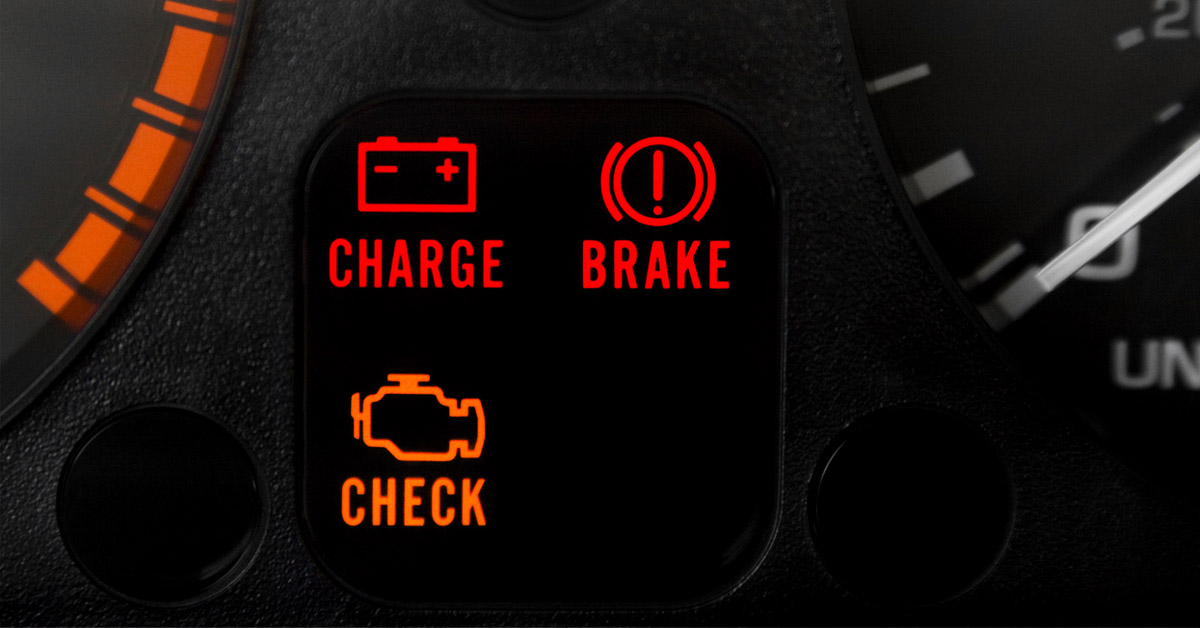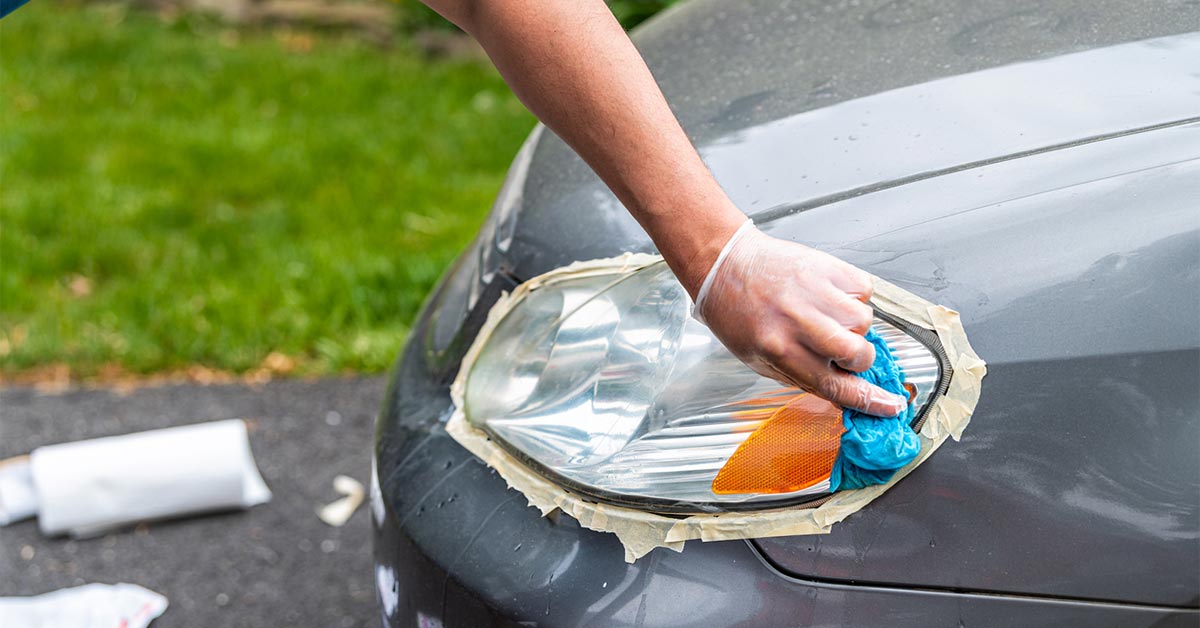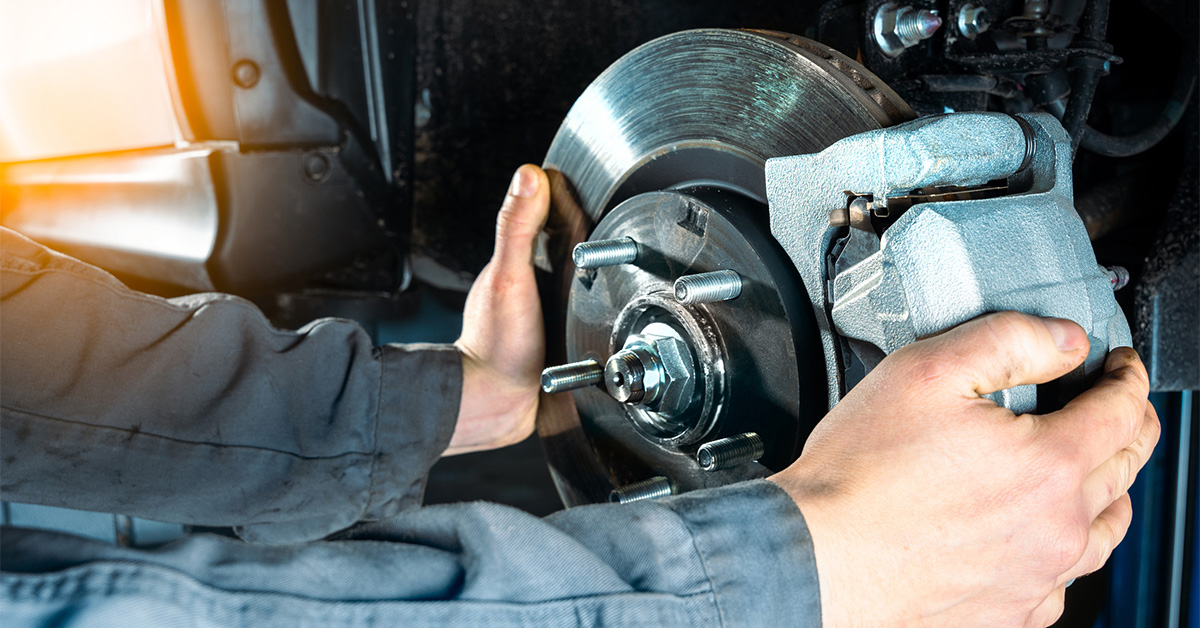It’s a scenario we’ve all experienced: you’re driving down the road, and suddenly, you hear a beep and notice that a bright symbol has appeared on your car’s dashboard. Whether it’s to signal that your tires are low or that a door is open, dashboard warning lights are how your car communicates that something isn’t quite right. When a new light comes on, it’s easy to begin worrying about a potential visit to the mechanic. However, not all symbols represent a significant issue. Let’s explore some of the most common dashboard warning lights and what they mean.
The Different Types of Car Dashboard Symbols
Before we dive into what common dashboard warning lights mean, it’s important to understand the different types of symbols that can appear. Although it can vary depending on your car’s model, most warning lights on a dashboard will come in three colors: green/blue, orange/yellow, and red.
In most vehicles, a green or blue light indicates that a system or feature is operating, such as cruise control. Orange or yellow symbols draw your attention to something you should be aware of, such as your car activating traction control. A red symbol will generally indicate that a significant issue or failure has occurred and that you should service your vehicle as soon as possible.
Note: Every vehicle is different, so some dashboard warning lights may vary slightly in appearance and meaning between car models. Always refer to your vehicle’s owner’s manual to understand your car’s signs.
10 of the Most Common Dashboard Warning Lights
1. Check Engine Light

Starting off our list is one of the most common warning lights that can appear on your dashboard: the check engine light. The silhouette of an engine usually represents the check engine symbol, but it can also sometimes be an all-caps “CHECK ENGINE” message. Although this may seem major, there are plenty of reasons why a car’s check engine light can turn on, some of which aren’t serious. A loose gas cap, low oil pressure, overheating issues, and misfires can all trigger your car’s check engine light.
What to do: If you’re driving and the check engine light comes on, don’t panic. If your car is still running normally and you don’t notice any changes, you don’t have to pull over immediately. Still, you should schedule a time to visit a mechanic or an AutoZone to determine the issue using an OBD reader. However, if your vehicle begins to make loud noises and the light repeatedly flashes, pull over and call for a tow. In these situations, the flashing symbol indicates a larger issue with your car’s engine.
2. Oil Pressure Light
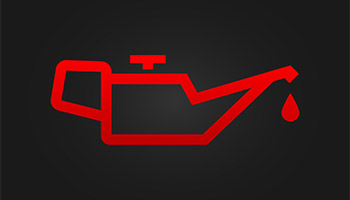
Engine oil keeps your engine running smoothly by lubricating its moving parts to reduce friction and damage. If your car detects low oil levels or pressure, it will trigger the oil pressure light. This symbol will typically be red and resemble a genie’s lamp. Although most drivers will likely never experience this sign, it shouldn’t be taken lightly. Running your car with insufficient oil levels can cause major damage to your engine.
What to do: If your oil pressure warning light turns on, pull over whenever it is safe. After letting the car sit for 10 minutes, check your oil levels. If your levels are low, add more oil and see if the light returns. If it doesn’t, you’re in luck! However, if the light remains on, a deeper issue could require a professional inspection. We recommend servicing your vehicle whenever the oil pressure light comes on to avoid unnecessary damage.
3. Tire Pressure Monitoring System Light
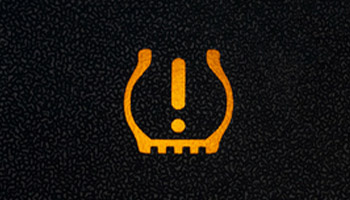
Low tire pressure will trigger your car’s tire pressure monitoring system warning, often represented as two-thirds of a circle with an exclamation point in the middle. Driving with under or over-inflated tires could result in an accident, so you should rectify the issue immediately. Most modern cars may even tell you the exact pressure levels of each tire.
What to do: After noticing the tire pressure symbol, head to a nearby gas station to use an air station. When filling up your tire, try to locate any nails or screws which could be causing air to leak. If you aren’t sure what PSI your tires should be at, refer to your owner’s manual or the tire information sticker on the inside of the driver’s door.
4. Battery Warning Light
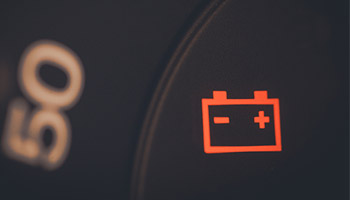
Your car’s battery plays a significant role in starting your vehicle and powering its systems. If you’ve experienced a dead battery before, you know how stressful the cranking sound can be. When your battery warning light comes on, it typically means an issue with your vehicle’s charging system. Potential problems include a damaged or loose battery cable, a bad alternator, or an additional electrical fault.
What to do: It is possible for your car to run smoothly even if the battery dashboard warning light is on. However, you shouldn’t take this issue lightly. If you notice the battery light comes on, your first step should be to inspect the battery for any loose cables or corrosion. You can also use a multimeter to check the battery’s charge. A healthy battery should read around 12.6 volts when the car is off. If your battery has a resting voltage below 12 volts, consider having a professional inspect it before replacing it to ensure there isn’t an underlying issue affecting the battery charge.
5. Engine Temperature Warning Light
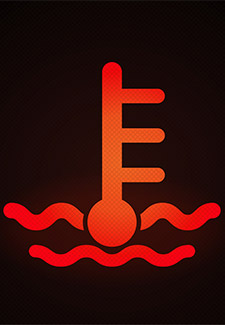
This warning light is one of the more straightforward symbols to decipher. You should act quickly if you see the engine temperature symbol (typically a thermometer dipping into water). Potential reasons for this warning light’s appearance include coolant issues, a clogged radiator, or a blown head gasket. Either way, you should not drive with the engine temperature light on for an extended period. Doing so could cause significant damage to your car’s engine.
What to do: If you’re driving and the engine temperature warning light comes on, pull over when it is safe. Allow your car to cool down for at least 15 minutes. Remember not to open your car’s hood while it is overheating, as the high temperatures could cause burns or injuries. While you wait for your engine to cool, consider calling for roadside assistance or scheduling a visit to the mechanic. Topping off your coolant may help in some cases, but if you have a leak, you may need professional help.
6. Brake System Warning Light
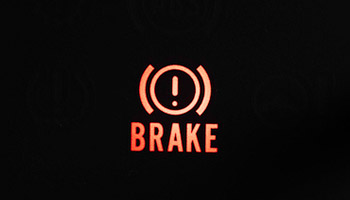
Sure, we all love to talk about how fast our cars can accelerate from 0 to 60 mph. But no matter what car you drive, braking is as important (if not more) than speed. If you can’t come to a quick and controlled stop, you could put yourself and others in a dangerous situation. In most cases, your car’s brake system warning light will appear if you drive off with your parking brake still activated. However, worn brake pads, low brake fluids, or issues involving the car’s anti-lock braking system (ABS) could also cause this dashboard warning light to turn on.
What to do: Always check to see if your parking brake is engaged when the brake system warning light illuminates. In most cases, resetting the parking brake will fix the problem. However, if the light is still on, we recommend servicing your vehicle as soon as possible to detect the issue. Driving with a faulty brake system can cause serious accidents, so you don’t want to delay the repair.
7. Traction Control Light
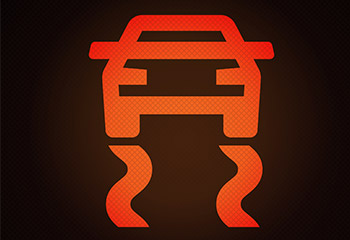
Your vehicle has built-in systems that help you maintain control in different road conditions. Traction control, for example, allows a car to maintain its grip between its tires and the road in slippery conditions. You will know your traction control is working when you see the symbol of a car with curvy lines ahead of it. Your traction control warning light will activate if your tires spin faster than the speed your car is going, which will prevent you from hydroplaning or skidding.
What to do: Your traction control light will typically turn on when the feature is active. Although it does not usually indicate a serious problem, you should proceed cautiously, as the light could mean your vehicle briefly lost its grip on the road. If you’ve switched traction control off, the symbol may appear with the words “OFF” underneath. Turning the traction control back on will remove the “OFF” message.
8. Fog Light Indicator

As mentioned, not all dashboard symbols represent a severe problem. If you’re driving with fog lamps on, your car will usually tell you with a green or blue headlight symbol. It’s important to be aware of when your fog lights are activated, as they can affect visibility for other drivers on the road.
What to do: Fog lights should only be used when visibility is less than 100 yards. If you are driving in clear conditions, your fog lights should not be on.
9) Low Washer Fluid Warning

The washer fluid light is one of the easier symbols to recognize and will not require any professional help to fix. If you see this symbol on your dashboard, it simply means that you are low on washer fluid. Although not a call for concern, you should top your washer fluid off whenever possible to maintain clear visibility.
What to do: If your washer fluid warning light comes on, all you need to do is add more fluid to the reservoir. Most cars will use the same symbol on the fluid reservoir cap, making it easy to locate underneath the hood.
10) Low Fuel Warning
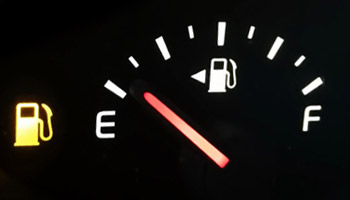
Ending our list is one symbol every driver has likely experienced: the low fuel warning light. Each vehicle will have different fuel levels that trigger this warning light, but it often means that you have about one or two gallons of fuel left.
What to do: Don’t push your luck when the low fuel warning light comes on. Even if you aren’t far from your destination, unexpected traffic or delays could cause you to run out of fuel quicker than you thought. Sometimes, a loose gas cap could also trigger this warning light.
Learn More About Car Maintenance
Want to read more about car maintenance projects you can do at home? Check out the DIY section of our blog to discover more ways to service your car without breaking the bank. Whether you’re looking for ways to clear foggy headlights or tips on how to keep your vehicle running smoothly, we’ve got you covered. For more information on how AIS can help with your insurance needs, click here.
The information in this article is obtained from various sources and is offered for educational purposes. Furthermore, it should not replace manuals or instructions provided by the manufacturer or the advice of a qualified professional. No warranty or appropriateness for a specific purpose is expressed or implied.
